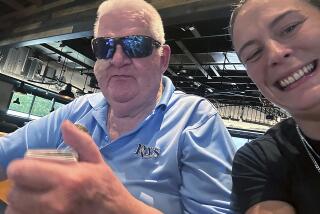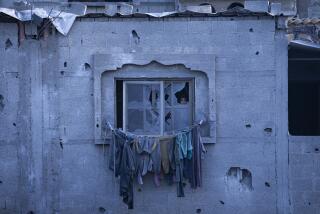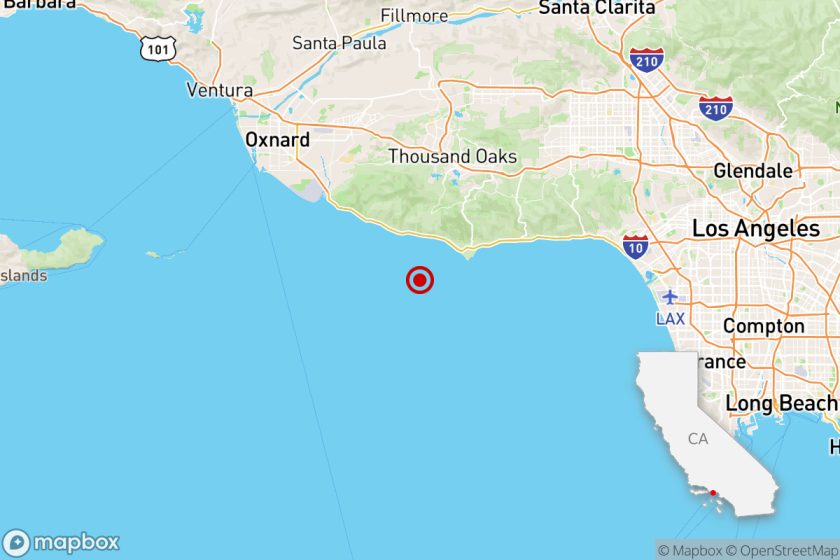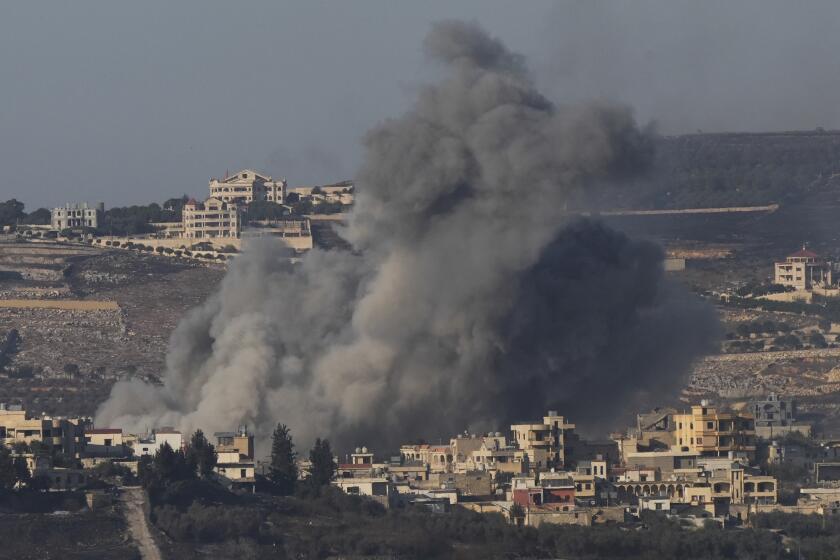5,500 Americans Sail Out of Subic Naval Base : Philippines: Those remaining try to cope with volcano’s destruction. ‘Hell camp’ is described.
Two days after Mt. Pinatubo buried Subic Bay Naval Base in nearly a foot of volcanic ash, crushing 122 buildings and cutting electricity and water, Linda Hardy woke up at sunrise Monday and decided to cook breakfast.
“So I went outside, built a fire and made coffee,” she said. A friend then helped her barbecue a freezer full of fast-defrosting steak, chicken, hamburgers and hot dogs. “We can’t possibly eat it in one day, but what else can we do?”
She next washed dishes in water from a rain gutter, carried more rain inside to flush the toilet, spent an hour and a half scraping concrete-like muck off her Mitsubishi van and decided to skip a six-hour line at a base commissary.
“We’ve turned into hell camp,” said Hardy, head of University of Maryland adult education courses at U.S. bases here. “We’re all doing it, but nobody wants to.”
Thus were more than 20,000 American military dependents and other civilians coping Monday at one of the Navy’s largest overseas bases while awaiting emergency evacuation from the death and destruction left by a still-erupting volcano, continuing earthquakes and a passing typhoon.
In what appeared to be part of America’s largest peacetime evacuation ever, sailors helped 3,500 Air Force spouses and children climb the gangplank--many in tears--to the Abraham Lincoln, on its maiden deployment as the Pentagon’s newest aircraft carrier. About 2,000 others boarded six other ships in Subic’s scenic, mountain-edged harbor.
The other Americans, including Navy dependents, Department of Defense contractors and civilian employees, will ship out by the end of the week in what the Navy has dubbed Operation Safe Haven. A second carrier, the Midway, is due to arrive from Japan on Thursday to help. About 15,000 active-duty personnel will stay in the Philippines.
“Probably nothing like this has ever been done,” Rear Adm. Thomas Mercer, U.S. Navy commander in the Philippines, told reporters on the busy pier.
The anxious evacuees were allowed to carry only one suitcase apiece, but they led a Noah’s ark of barking dogs, nervous cats and other pets aboard. “We’ve got ships full of dogs,” Subic spokesman Jerry Moore sighed.
The cruiser Arkansas, which left Subic Bay on Sunday, arrived early Monday at a coconut oil milling wharf in Cebu, 350 miles to the south, and disgorged the first few hundred evacuees. By midafternoon, the first of three C-141 transport planes was flying 96 people to Guam, where flights are to take them to the United States.
Few Filipinos were so lucky. At least 101 have died, according to the Philippine Red Cross, and more than 100,000 people crammed makeshift evacuation centers in schools, stadiums and churches while countless others moved in with family and friends. Government officials appealed for food, blankets and medical supplies to help the sad stream of refugees who continued to flee the devastated area.
In San Fernando, 24 miles south of the volcano, factory worker Fred Molina sat glumly with his family and three neighbors in a darkened elementary school classroom, huddled around candles and eating the little rice and fish they could carry with them on foot. All their homes were destroyed.
“I don’t see anything from the government,” Molina said as hundreds of babies and half-naked children slept on school chairs or on the dusty floor. Nearby, firefighters ran out of water as they battled a blazing building. “What can go wrong next?” a local official muttered.
President Corazon Aquino declared a “state of calamity” in eight towns. Speaking at the opening of a housing project in Manila, she said the hellish combination of natural disasters was “maybe God’s way of testing us so that we will not lose hope in him.”
But in an indication of growing desperation, looters armed with crowbars forced open locked food shops and carted off canned goods in Angeles city, outside Clark Air Base. Scores of buildings are down in the ash-covered city, and power and water remain cut.
“We will die of hunger if we don’t do this,” one of the looters told the Associated Press. Police tried to stop the looting but gave up when the mob grew too large.
Distribution of relief supplies and clean water was hampered by washed-out bridges and roads clogged with sticky ash, fallen trees and bumper-to-bumper traffic. Dense clouds of ash grounded planes and helicopters, and Manila’s international and domestic airport remained shut for the third day, stranding thousands of travelers. Officials said flights may resume today or Wednesday.
Raymundo Punongbayan, head of the Philippine Institute of Volcanology and Seismology, said the 36-hour eruption episode that began Friday afternoon spewed up to 2.6 billion cubic yards of ash and rubble across central Luzon, more than the 1980 eruption of Mt. St. Helens in Washington state.
Mt. Pinatubo continued to rumble with volcanic quakes and belch gray smoke Monday, dropping more ash to the east on Clark Air Base. “But it seems to have simmered down a bit,” Punongbayan said. “Now we wait for the next one.”
Adm. Mercer estimated it would take a month before operations could resume at Clark and Subic Bay, key logistics and support bases for U.S. forces in the Pacific.
It won’t be soon enough for the University of Maryland’s Hardy, who has lived in a one-bedroom apartment in a bachelor officer’s quarters at Subic for two years. Power failed at 5 p.m. last Friday, and water has come on for only an hour a day since. The North Carolina native hopes to be evacuated Thursday, but the wait isn’t easy.
“It looks like nuclear winter,” she said in a telephone interview. “. . . Everything is covered with volcanic ash.”
Hardy said many on the base were “pretty much in shock” as they abandoned spouses and parents, homes and friends in a land many love.
“You get real confused if you think about tomorrow, and two weeks and a month,” she added. “That’s when things get real shaky. I have a career position here. What’s going to happen?”
Even worse, many of her friends at Clark have already left, bag in hand, goodbys unsaid, their destinations unknown.
“I’ve lost those people,” she said. “I mean, they’re gone. There’s no way to get in touch with them. There is no address. There is no phone number. I don’t know where they are in the States. I’ve lost them. That is hard.
“Your brain can’t comprehend what’s going on,” she added quietly. “You just can’t comprehend that your whole world as you know it has changed.”
More to Read
Sign up for Essential California
The most important California stories and recommendations in your inbox every morning.
You may occasionally receive promotional content from the Los Angeles Times.











